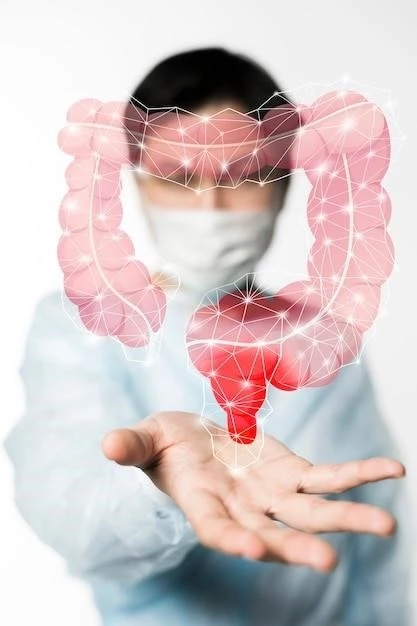Introduction
Pancreas divisum, a congenital anomaly, occurs when the pancreatic ducts fail to merge during fetal development. This condition affects the drainage of digestive juices and can lead to complications such as pancreatitis. Understanding its implications and management strategies is crucial.
Definition of Pancreas Divisum
Pancreas divisum is a congenital anomaly where the two main ducts of the pancreas, the ventral and dorsal ducts, fail to fuse during fetal development. This results in two separate pancreatic ducts instead of a single unified duct, potentially impacting the normal drainage of digestive enzymes from the pancreas. While most individuals with pancreas divisum remain asymptomatic, some may experience complications such as pancreatitis. Understanding the anatomy of the pancreas and the implications of this condition is vital for proper diagnosis and management.
Causes and Prevalence
Pancreas divisum results from the failure of the ventral and dorsal pancreatic ducts to fuse correctly during fetal development. It is a common congenital anomaly, affecting approximately 5-10% of the population. Understanding the origins and prevalence of this condition is essential for proper management and diagnosis.
Origins of Pancreas Divisum
Pancreas divisum is a congenital anatomical variant where the ventral and dorsal ducts of the pancreas fail to merge during early fetal development. This results in two separate ducts, potentially impacting the normal drainage of pancreatic juices. The prevalence of pancreas divisum in the population underscores the importance of understanding its embryological origins.
Pancreas divisum is a relatively common congenital anomaly, affecting approximately 5-10% of the general population. While the majority of individuals with pancreas divisum do not experience any symptoms, a subset of patients may develop complications such as pancreatitis. Understanding the prevalence of this condition is crucial for effective diagnosis and management strategies.

Symptoms and Complications
Individuals with pancreas divisum may experience symptoms such as abdominal pain, bloating, and potential complications like pancreatitis. Recognizing these signs and understanding the implications of this condition is crucial for appropriate management and care.
Prevalence in the General Population
Pancreas divisum, a common congenital anomaly, affects around 5-10% of individuals in the general population. While most cases remain asymptomatic٫ a small percentage of people may experience symptoms or complications such as pancreatitis. Understanding the prevalence of pancreas divisum is essential for proper diagnosis and management.
Complications such as Pancreatitis
Pancreatitis is a potential complication of pancreas divisum, caused by the blockage of the narrowed pancreatic duct. This can lead to inflammation, tissue damage, and severe abdominal pain. Seeking medical attention for pancreatitis and addressing the underlying causes, such as pancreas divisum, is crucial for effective management and prevention of further complications.
Diagnosis
Diagnosing pancreas divisum often involves imaging studies such as Magnetic Resonance Cholangiopancreatography (MRCP) or Endoscopic Retrograde Cholangiopancreatography (ERCP) to visualize the pancreatic ducts. Identifying the presence of two separate ducts plays a crucial role in confirming this congenital anomaly.
Diagnostic Methods⁚ MRCP and ERCP
Magnetic Resonance Cholangiopancreatography (MRCP) and Endoscopic Retrograde Cholangiopancreatography (ERCP) are common methods used to diagnose pancreas divisum. MRCP provides detailed images of the pancreatic ducts using magnetic fields, while ERCP involves inserting a tube with a camera to visualize the ducts. Identifying the presence of two distinct ducts is vital in confirming the condition.
Identification of Two Separate Pancreatic Ducts
In cases of pancreas divisum, the presence of two distinct pancreatic ducts, the ventral and dorsal ducts, is crucial for diagnosis. These ducts, instead of merging into a single duct, remain separate, impacting the drainage of pancreatic enzymes. Visualization of these separate ducts through imaging techniques like MRCP or ERCP is essential in confirming the presence of pancreas divisum.

Treatment Options
Treatment for pancreas divisum focuses on managing symptoms and complications. Lifestyle modifications such as dietary changes and avoiding alcohol may help. Medical interventions like pain management and stenting of the ducts can be considered in symptomatic cases. Collaboration with healthcare providers is essential for personalized treatment plans.
Lifestyle Changes and Management Suggestions
For individuals with pancreas divisum, incorporating lifestyle changes such as following a low-fat diet, avoiding alcohol, and maintaining a healthy weight can help manage symptoms and reduce the risk of complications like pancreatitis. Working closely with healthcare providers to develop a personalized management plan is essential for optimizing quality of life and well-being.
Medical Interventions for Symptomatic Cases
When individuals with pancreas divisum experience symptoms such as abdominal pain or pancreatitis, medical interventions may be necessary. Treatments can include pain management strategies, stenting of the ducts, or other therapeutic measures to alleviate discomfort and prevent complications. Seeking timely medical attention is crucial for managing symptomatic cases effectively.
Prognosis and Outlook
Pancreas divisum, while often asymptomatic, can lead to complications such as pancreatitis. The impact on quality of life and long-term prognosis for individuals with this condition varies. Seeking appropriate medical care and following recommended management strategies are essential for a favorable outcome and maintaining overall well-being.
Impact on Quality of Life
Pancreas divisum can have varying effects on an individual’s quality of life, ranging from asymptomatic cases to those experiencing recurrent pancreatitis. While many individuals with pancreas divisum do not face significant challenges, those with symptomatic cases may have to manage pain and potential complications that can impact their daily activities. Seeking appropriate medical care and adhering to recommended management strategies are key to maintaining a good quality of life.
Long-Term Prognosis for Individuals with Pancreas Divisum
The long-term prognosis for individuals with pancreas divisum varies depending on the presence of symptoms and complications. While most cases remain asymptomatic and do not require treatment, those experiencing recurrent pancreatitis or other issues may require medical intervention to manage the condition effectively. Regular monitoring and appropriate medical care can help individuals with pancreas divisum maintain a good quality of life and overall well-being.
Research and Advancements
Continued research on pancreas divisum aims to refine diagnostic approaches and enhance treatment strategies. Recent advancements focus on improving imaging techniques for a more precise diagnosis and exploring novel interventions to address symptoms and complications effectively. Stay updated on the latest developments in the management of pancreas divisum for optimal patient care.
Ongoing Studies on Pancreas Divisum
Research on pancreas divisum continues to investigate the various aspects of this congenital anomaly, including its prevalence, diagnostic methods, and treatment outcomes. Ongoing studies aim to enhance our understanding of pancreas divisum’s impact on individuals and develop more effective management strategies. Stay informed about the latest research findings to improve patient care in individuals with this condition.
Latest Developments in the Treatment of Pancreas Divisum
Ongoing advancements in the treatment of pancreas divisum focus on personalized care approaches tailored to each individual’s needs. Emerging treatment options aim to address symptoms effectively, manage complications like pancreatitis, and improve overall quality of life for patients with this congenital anomaly. Keeping abreast of the latest developments in the management of pancreas divisum is crucial for healthcare providers and individuals seeking optimal care.
